This informal report by the Division of Entomology & Plant Pathology is a commentary on insects, diseases, and curiosities division staff encounter on a week-to-week basis. Comments and questions about this report are welcome and can be sent to your respective Inspector.
Our Website
Inspector Territories
Caydee Terrell (Nursery Inspector & Compliance Officer) -
Last week I found this weird mottling on Rudbeckia. I figured it was a virus, so I took it to get tested. Purdue Plant Diagnostic Lab (PPDL) sent a report back saying the plant was positive for tobacco streak virus along with the following statement: Although extension publications mention this virus on Rudbeckia and it is widely known on other crops, I cannot find journal publications documenting it on Rudbeckia. So, that was a pretty cool find!
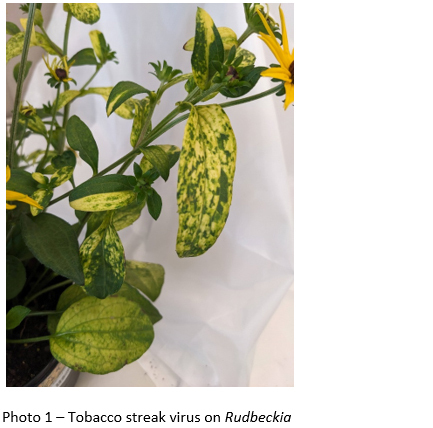
Also, I came across four spirea plants that had weird but also cool mottling as well last week. Although we did not get the viral tests ($100 for each test), PPDL determined we were most likely looking at spirea yellow leaf spot virus.
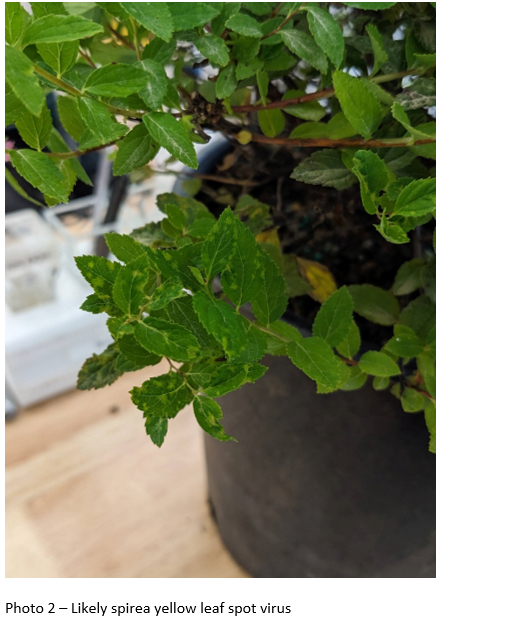
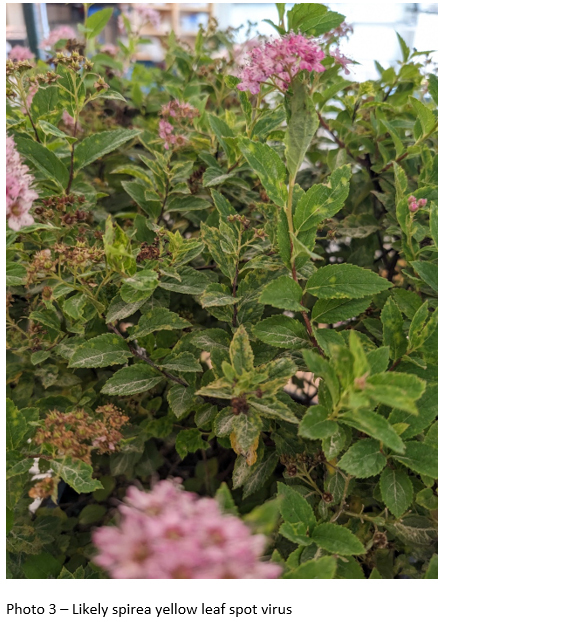
Jared Spokowsky (Nursery Inspetor & Compliance Officer) -
I had a couple of interesting encounters this past week. The first thing I found while doing a USDA bee sample. After I had completed it, I was watching a varroa mite that was on a larva that I had knocked out of the frame. However, it was not the mite that captured my interest, but a small brown line that was moving. After observing it for a while it appeared to be a maggot or small worm of some description.
The only thing that I can hypothesize is that it was a bee louse larva. Bee lice (Braula coeca Nitzsch) are small wingless flies about the size of a varroa mite. They are generally overlooked by most beekeepers and are not considered a major hive pest. They are not all that well studied but the larvae generally are thought to feed on honey or pollen and can cause minor damage when they tunnel under the cappings of sealed honeycomb. If you want to learn more about them please follow this link to the University of Florida page for more information.
Upon further conversation with more knowledgeable people than myself, I no longer think this was a nematode of some description. I’m kicking myself for taking it out of the pan and leaving it on the hood of my vehicle because it ended up rolling off the hood and I couldn’t find it again.

A second interesting scenario last week happened while doing a nursery inspection. At the nursery, I ran across a very heavy infestation of tuliptree scale. The trees were blackened from sooty mold which was noticeable from 100 yards away. Upon closer inspection, a local beekeeper had put two hives under these trees for the pollination of some pumpkins that had been planted adjacent to the trees. Pretty much every flying thing that can sting was hanging around including European hornets, baldfaced hornets, yellow jackets, paper wasps, and bumble bees. The honeybees were pretty content to ignore the honeydew and were working the pumpkin flowers and some common milkweed around the edge of the field.
There was a pretty intense amount of competition for the honeydew and I witnessed more than one baldfaced hornet get taken out of the air by European hornets. There were several dead and dying baldfaced hornets under the trees and I spent some time watching the hive entrance hoping to get some photos of hornet aggression with bees. Unfortunately, the bees were proactive in defending the hive and wouldn’t let me sit close enough to the entrance to get good photos. I continued to try and get some more photos of hornets but after having multiple close calls of hornets fighting and dropping on me out of the trees and almost down my sweatshirt, I decided I had pushed my luck far enough.
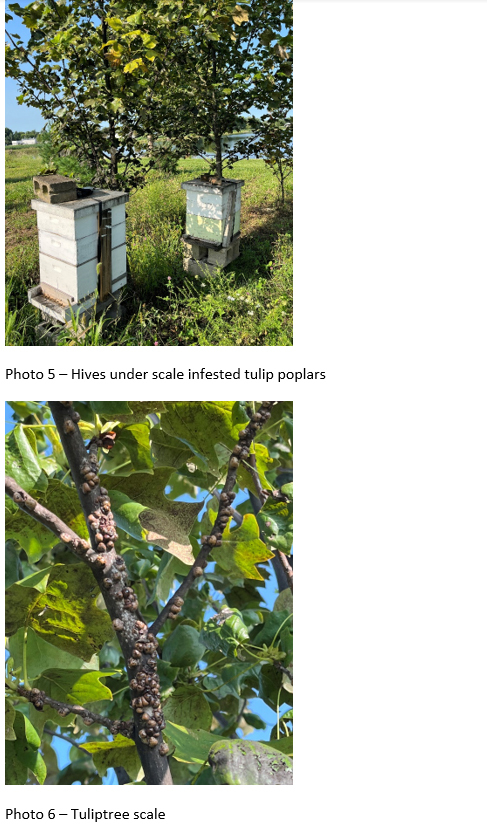
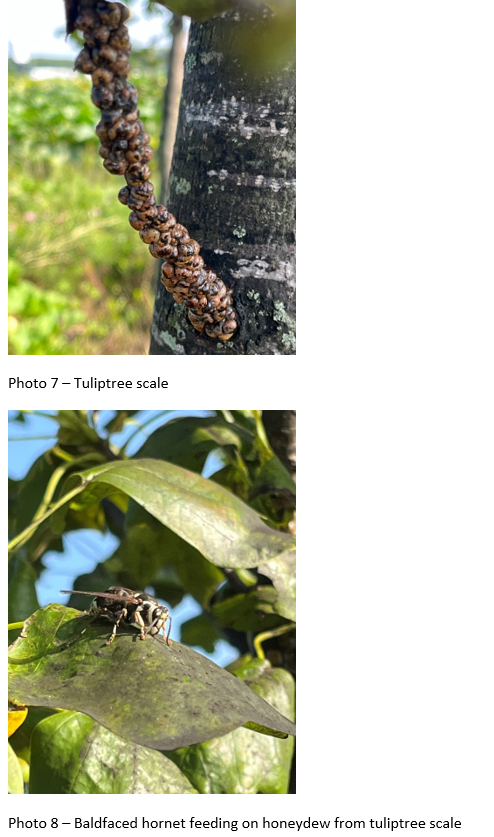
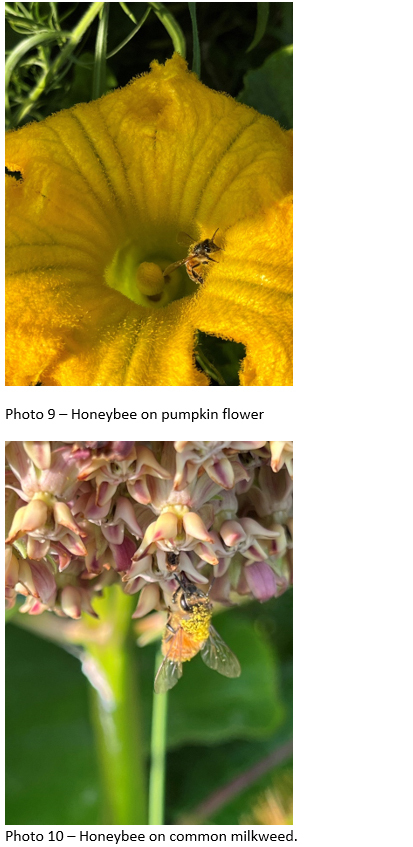
Another interesting find was a moderately heavy patch of rough oak bullet galls on swamp white oaks. These too had lots of flying stinging things hanging around and there was pretty intense competition for the nectar being produced. Bullet galls are formed by cynipid wasps. The wasp larvae are able to induce their host to form the galls which they live in and feed on. The galls also have extrafloral nectaries which secrete nectar and attract other insects like ants and wasps. In this case, there was not that much ant activity, but the hornets were out in full force and also some wasps which I believe to be in the Tiphiidae family (possibly Tiphia pygidialis). These are similar to the photo I submitted a couple of weeks ago of the five banded thynnid wasp and they are parasitoids of beetle larvae. If you would like far more detail on this fascinating bullet galls/cynipid wasp complex I would encourage you to read this write up in the OSU Buckeye Yard & Garden onLine (BYGL) by Joe Boggs.
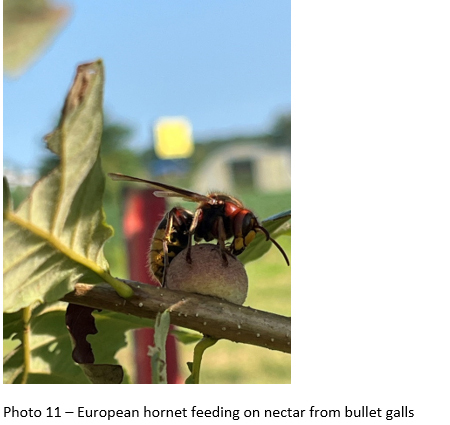
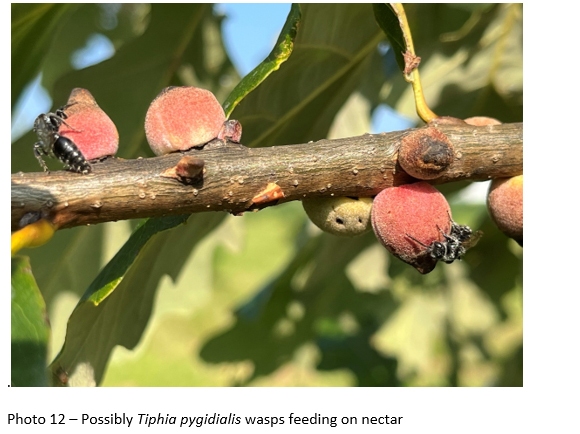
Lastly, I had a nursery change hands and the new owner was not aware that barberry (Berberis) including ones labeled “non-invasive” cannot be sold in Indiana under the Terrestrial Plant Rule and a stop sale was issued for these.
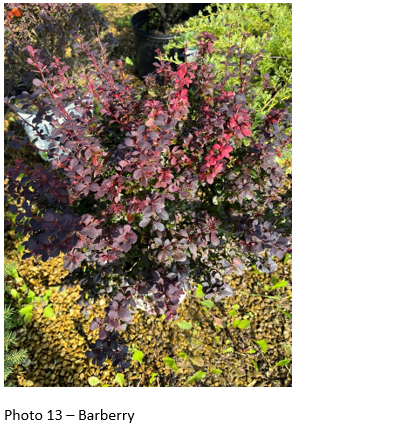
Kristy Stultz (Nursery Inspector & Compliance Officer) -
Fall is near and competition can be tough for the best resources. Honeybees (Apis spp.) and a soldier beetle (Chauliognathus pensylvanicus) all try to get the best from this compass flower (Silphium laciniatum).
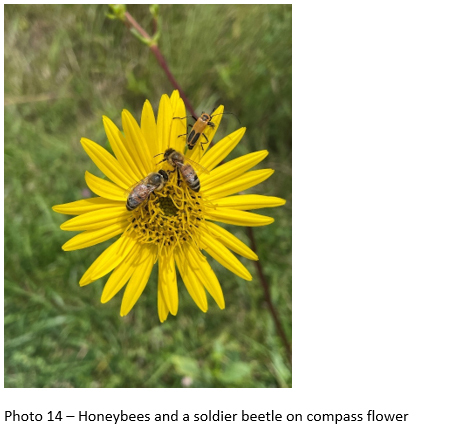
Weather in the Midwest is a very fickle thing. With warm days and cool nights comes early fall color. Compound that with the intense heat and low humidity of the days to come and trees are going to be under a lot of stress. Many will likely begin to show signs of early senescence. However, it’s always a good idea to double check those trees with early fall color. As can be seen by these photos, sometimes that color is caused by an insect stressor. In this case, Japanese maple scale (Lopholeucaspis japonica) has gotten to extremely high levels. When levels get this high, it can be difficult to tell if there is more than a single species of scale present (there could be) and treatment is much more difficult.
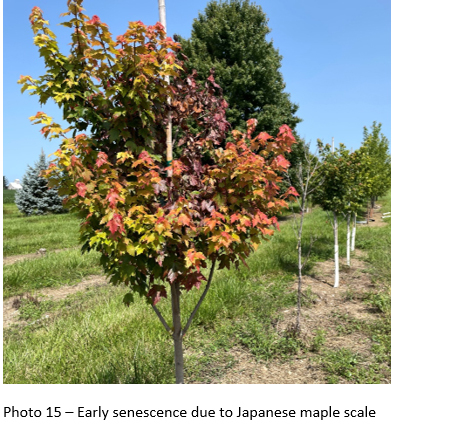
Angela Rust (Nursery Inspector & Compliance Officer) -
Just sharing a couple of photos this week. Herbicide injury on grape and a parasitized tobacco hornworm caterpillar on tomato.
If you see a hornworm caterpillar on your tomato plant that looks like this – leave it! This caterpillar has been parasitized by a small wasp which inserts its eggs into the caterpillar. The growing wasp larvae inside the caterpillar will consume it from the inside out. The grown larvae will then form white oval cocoons for pupation on the outside of the caterpillar. Adult wasps will emerge and provide more natural enemies in your garden area for future seasons.



